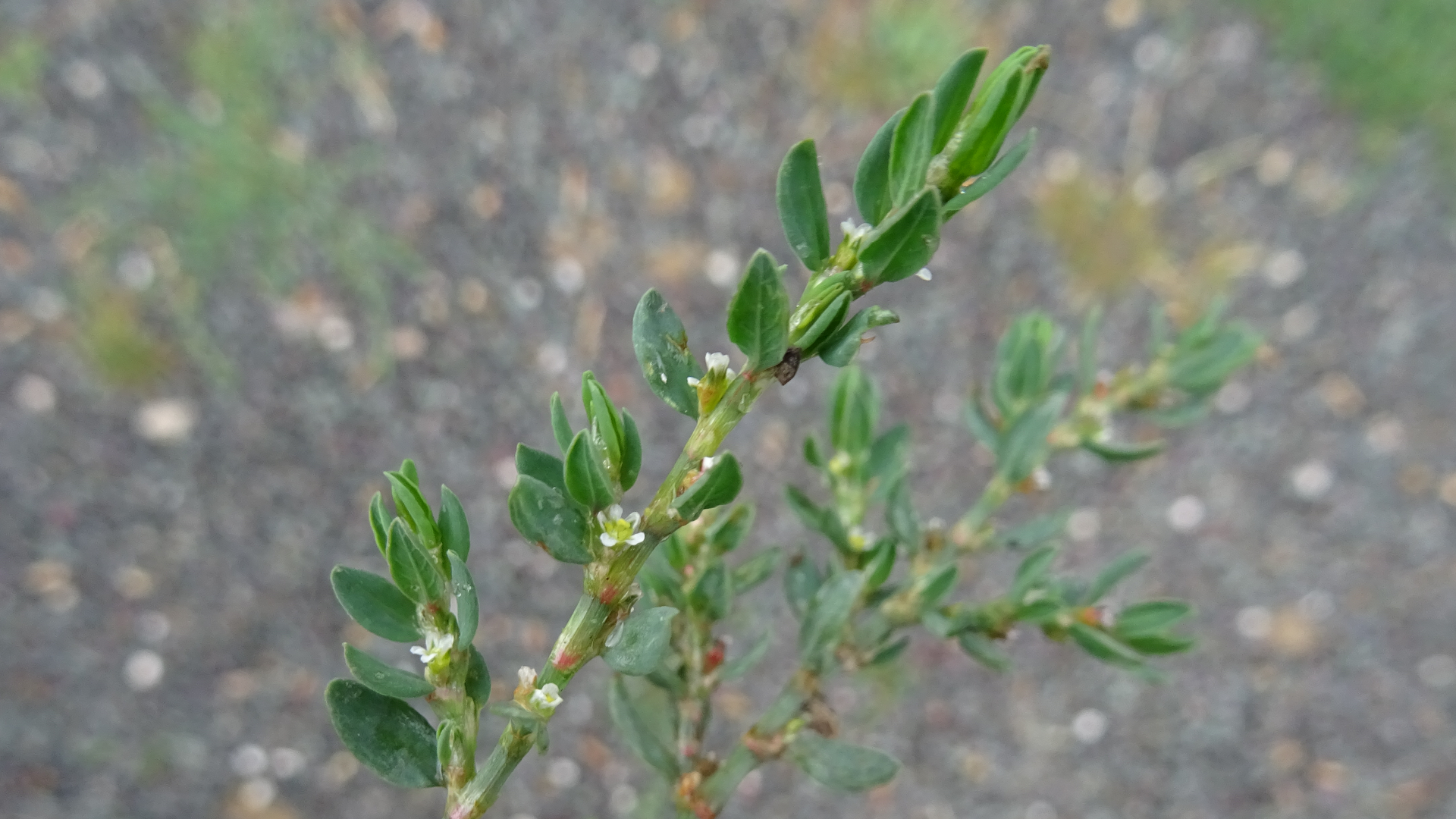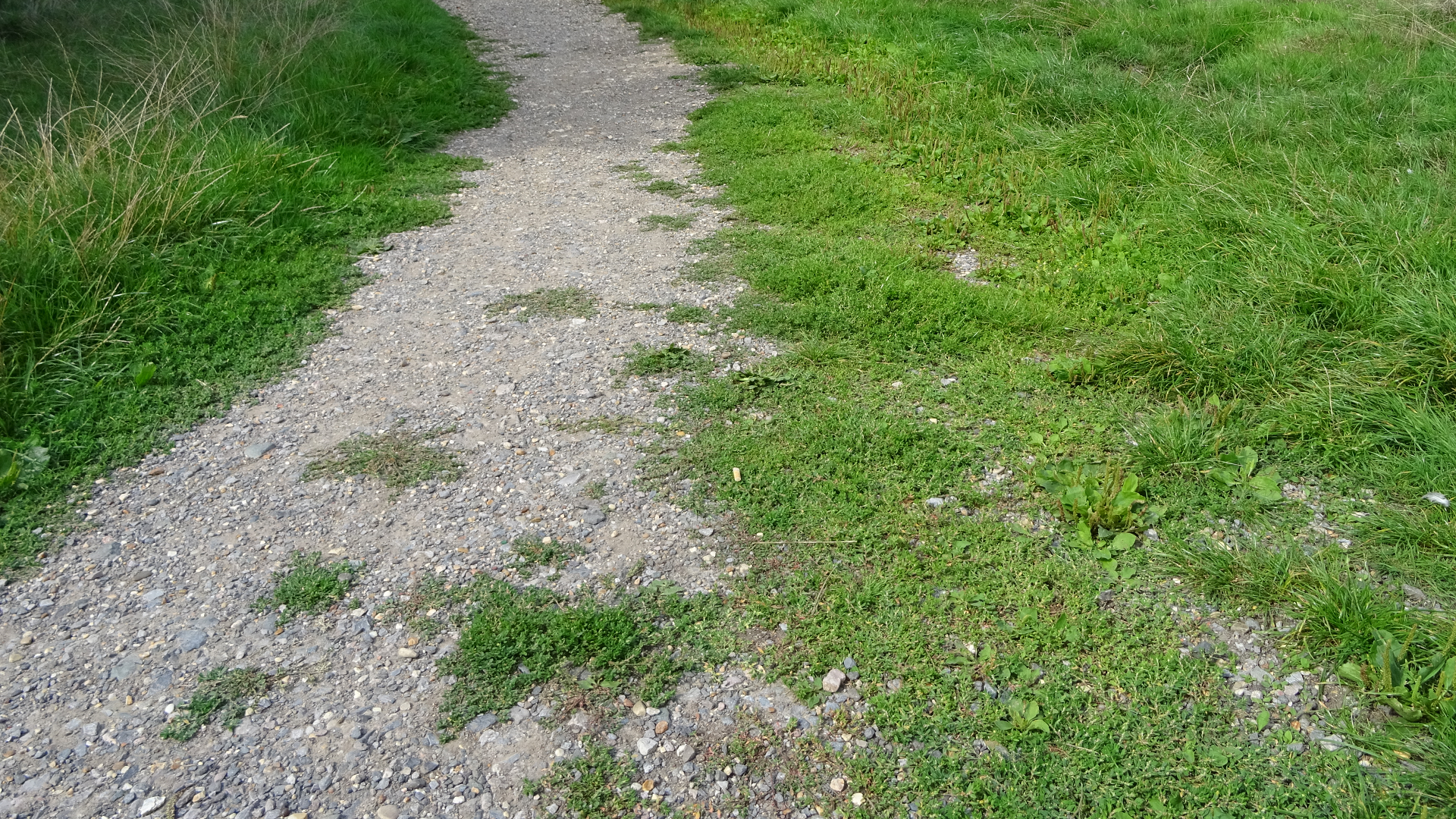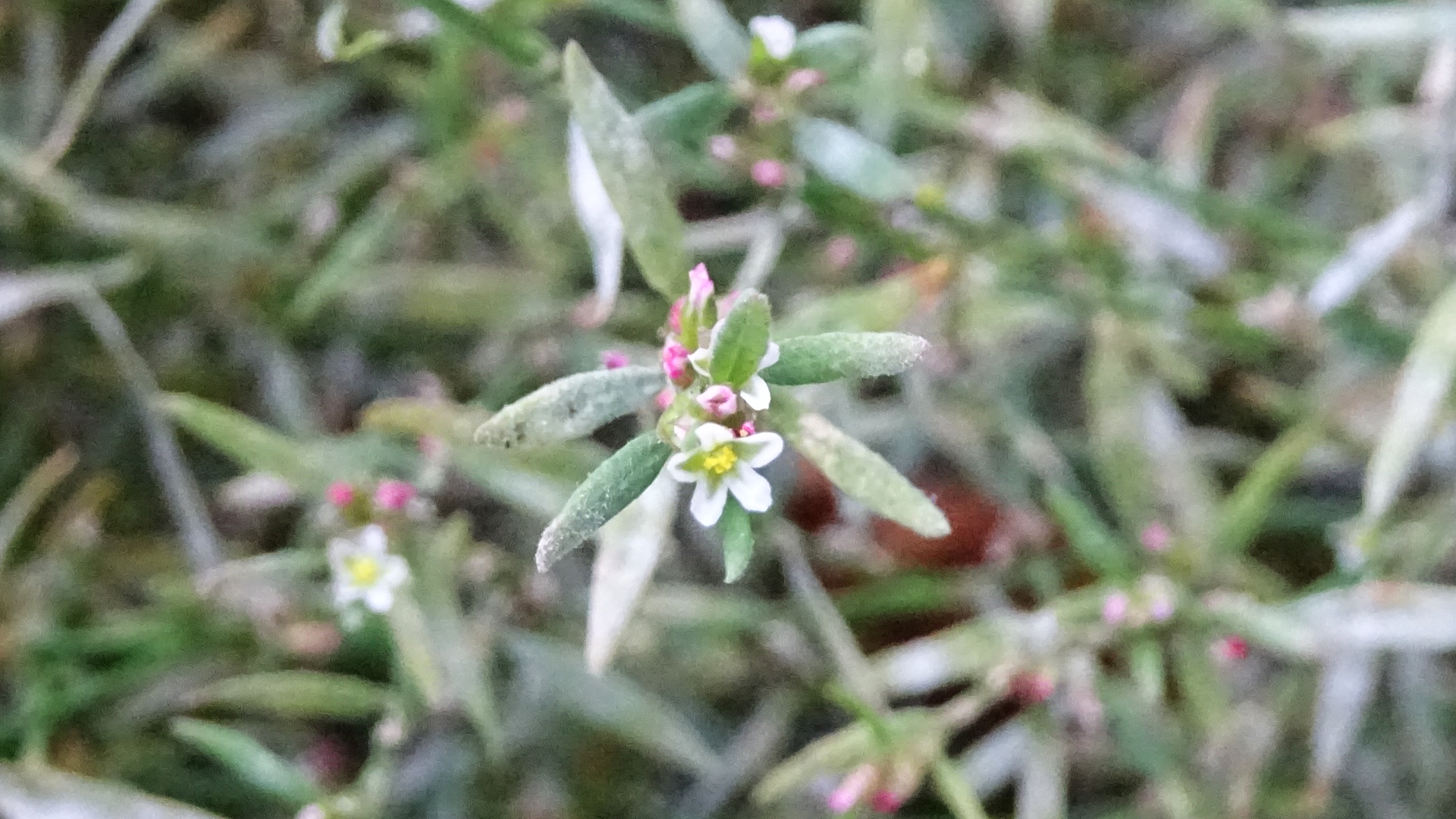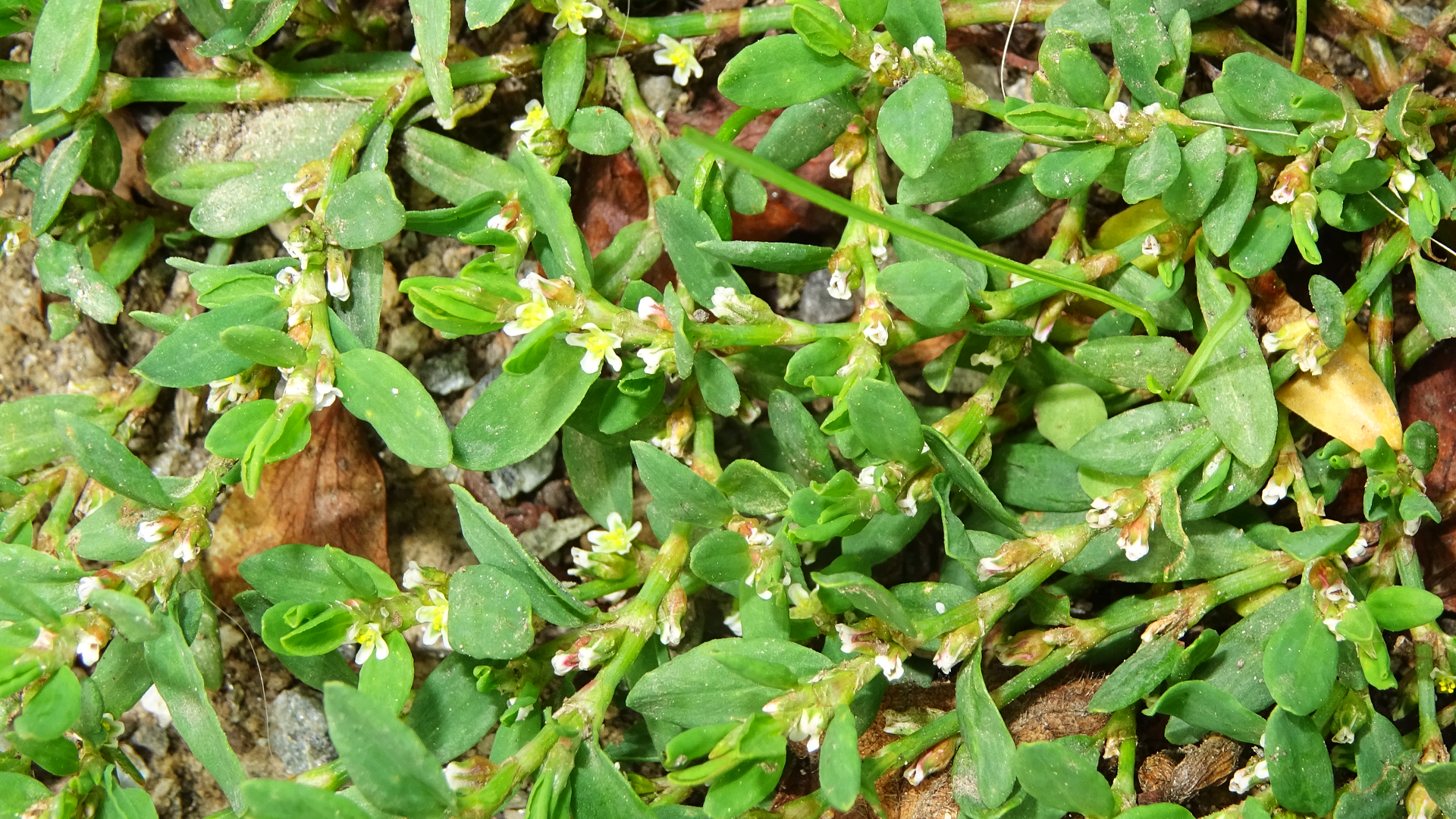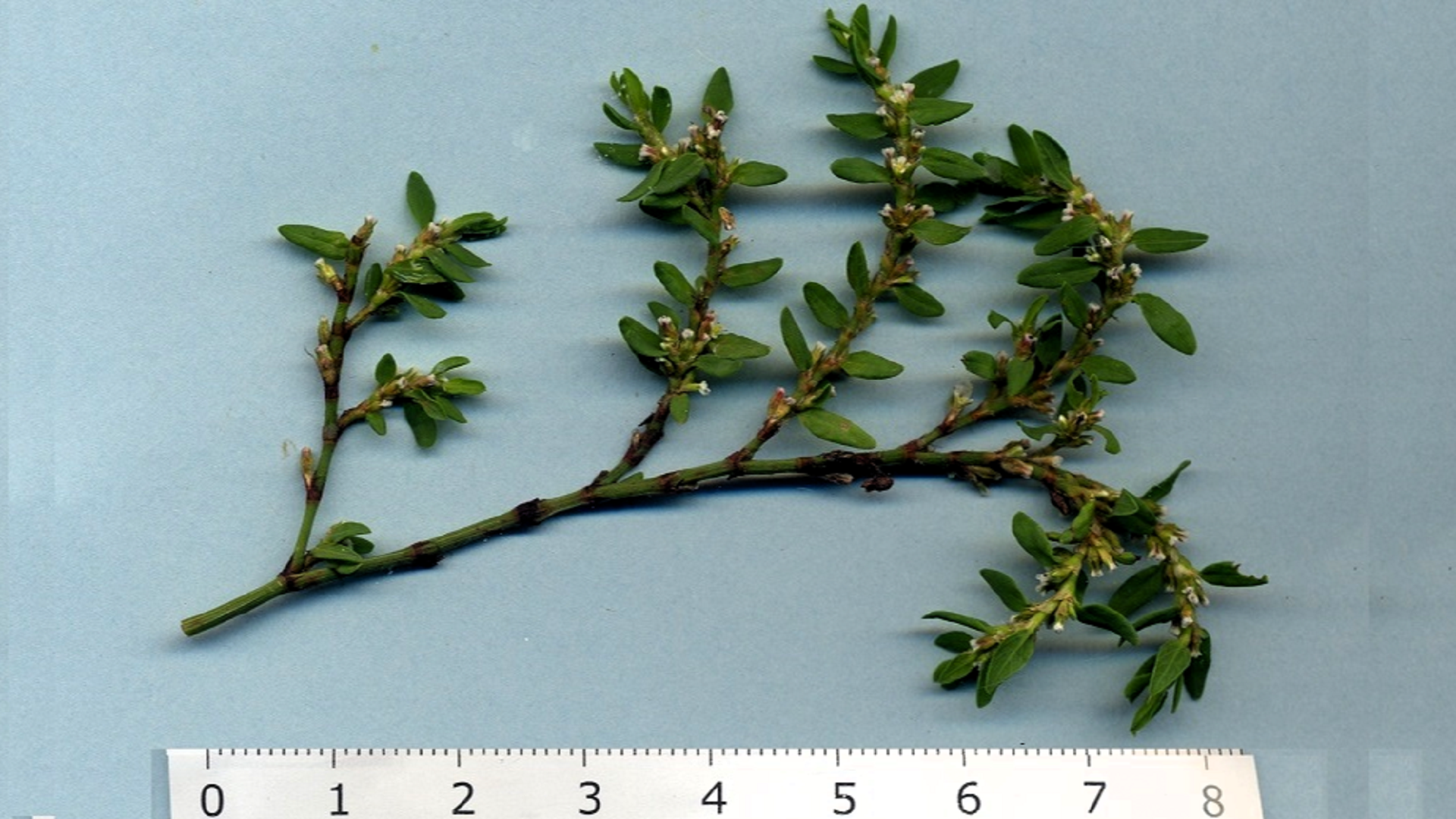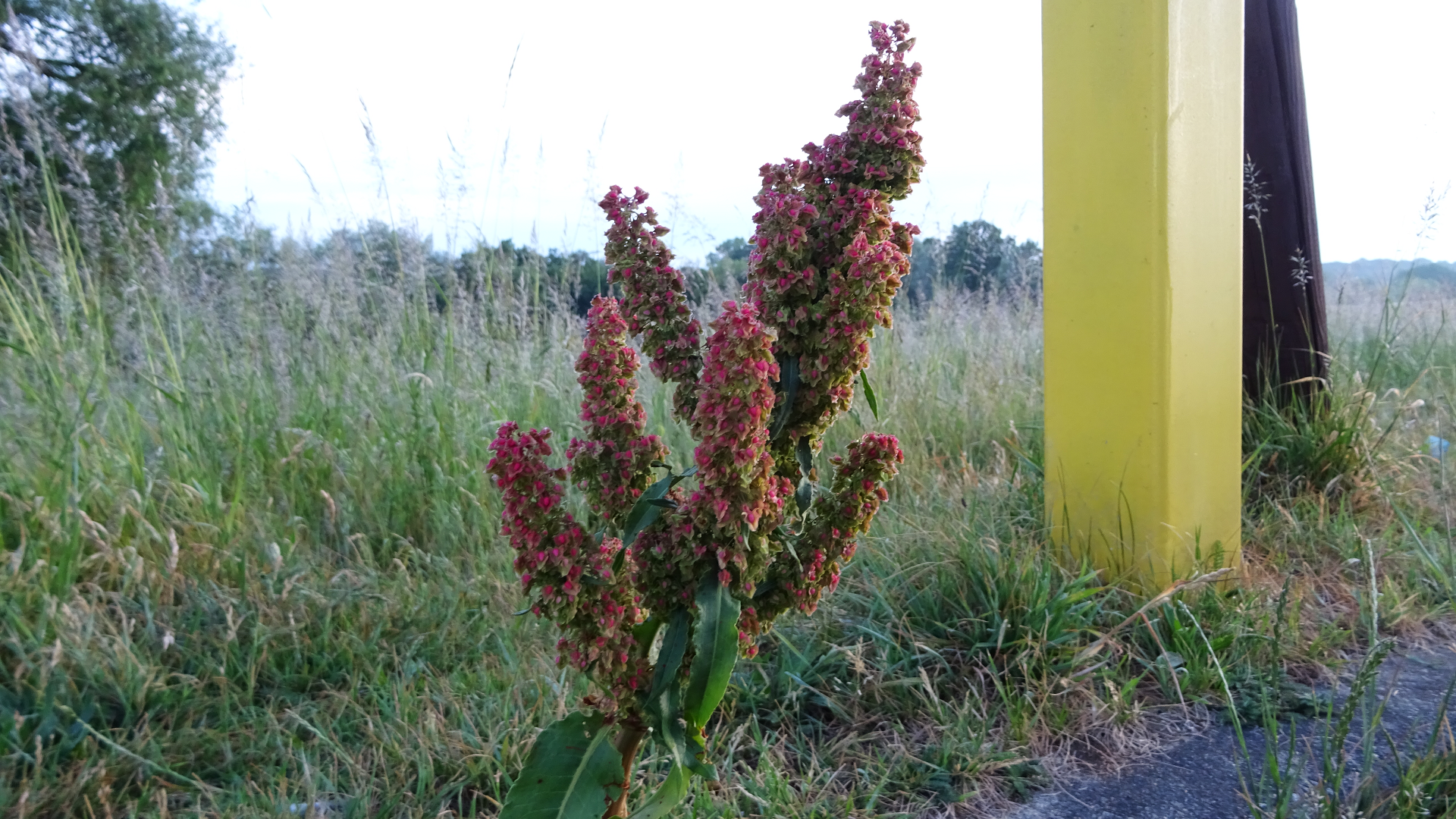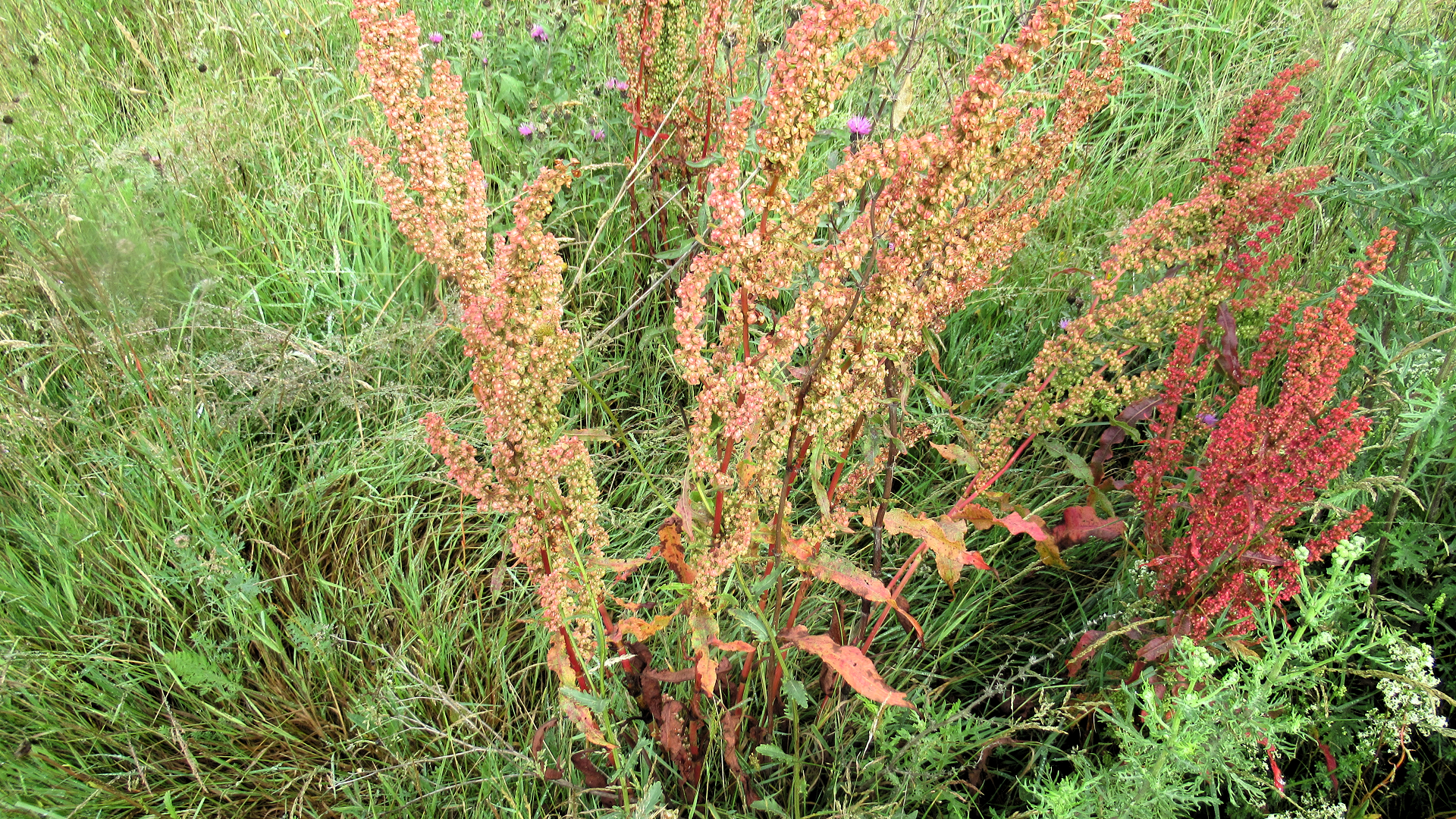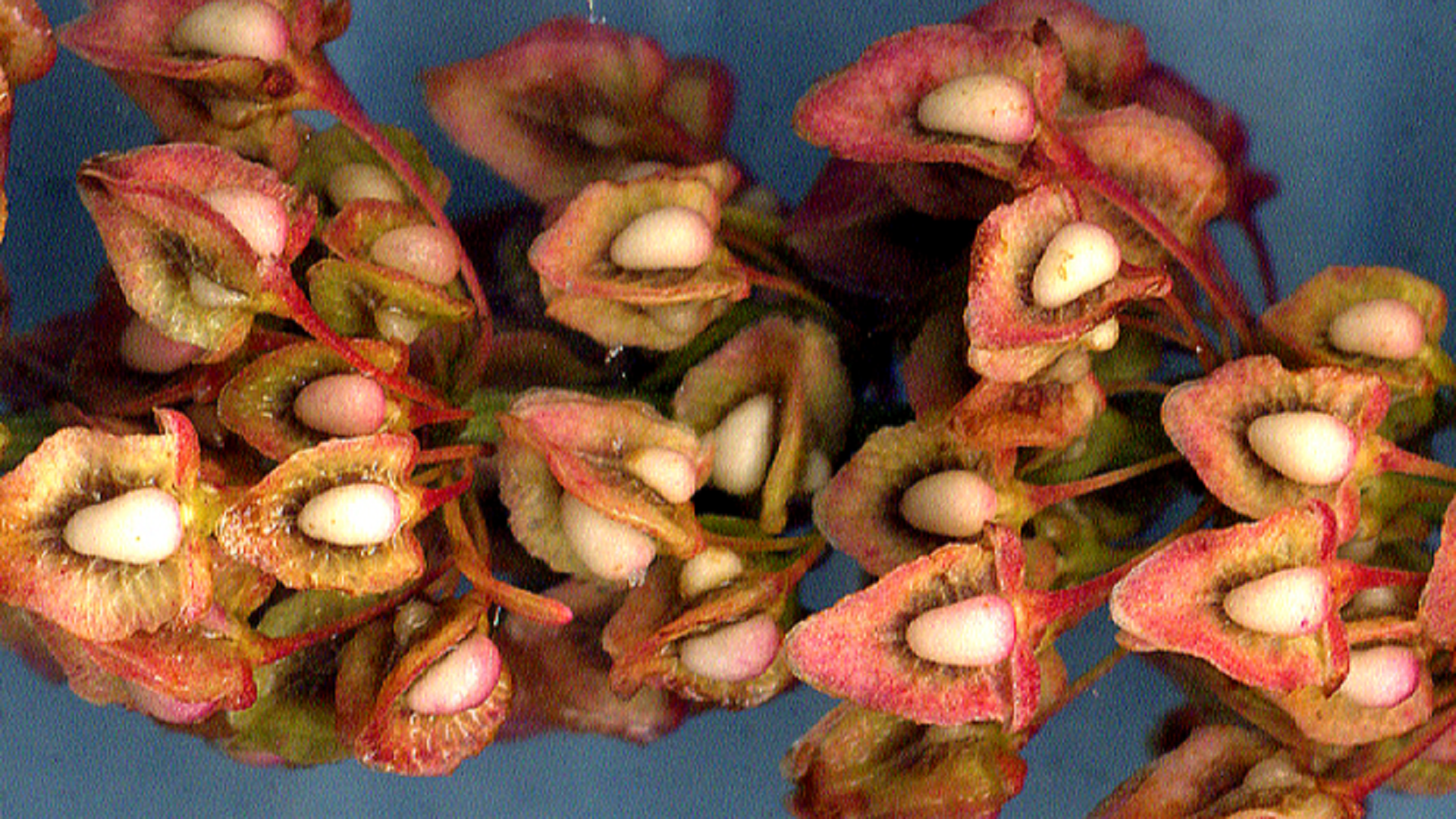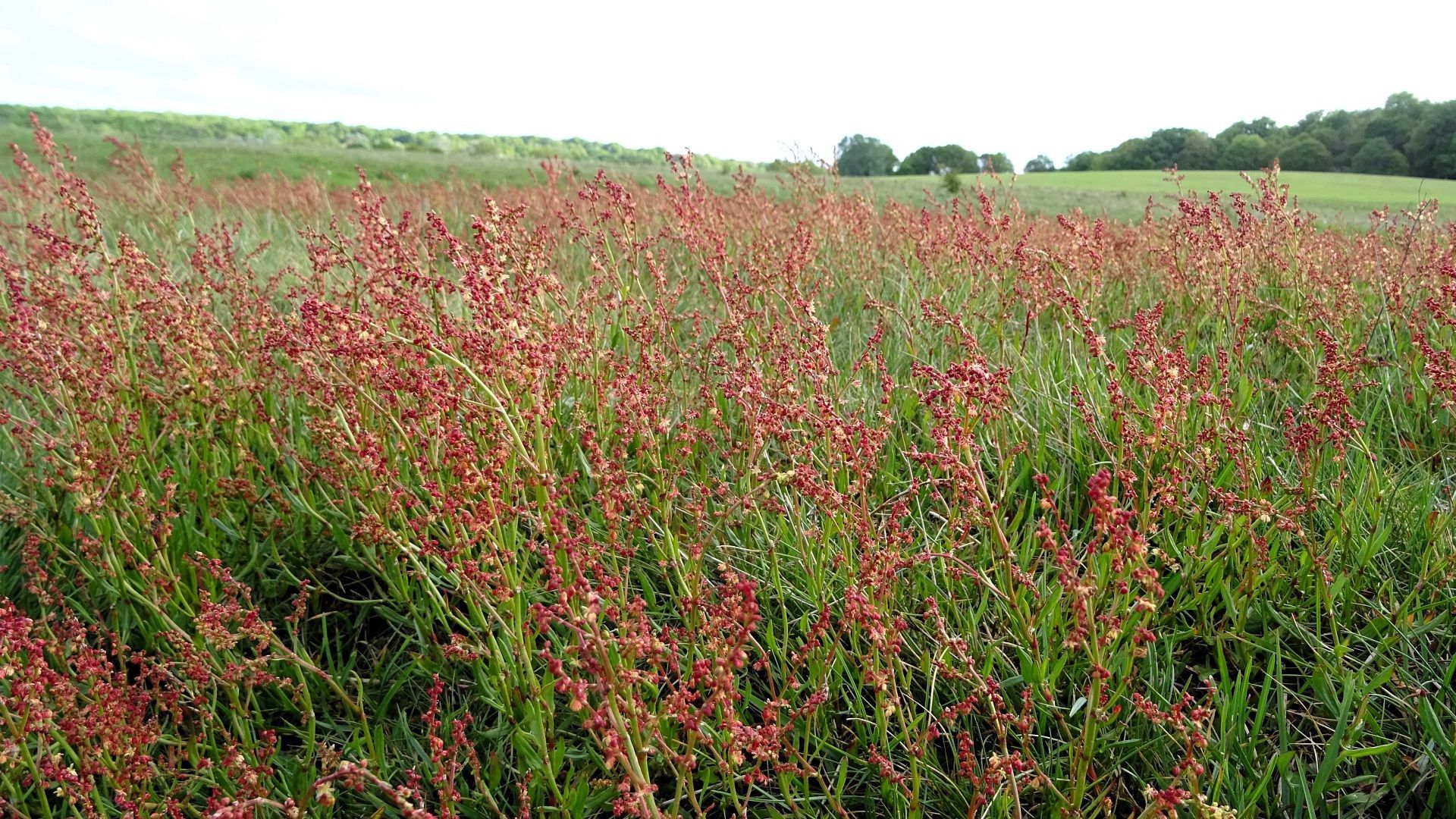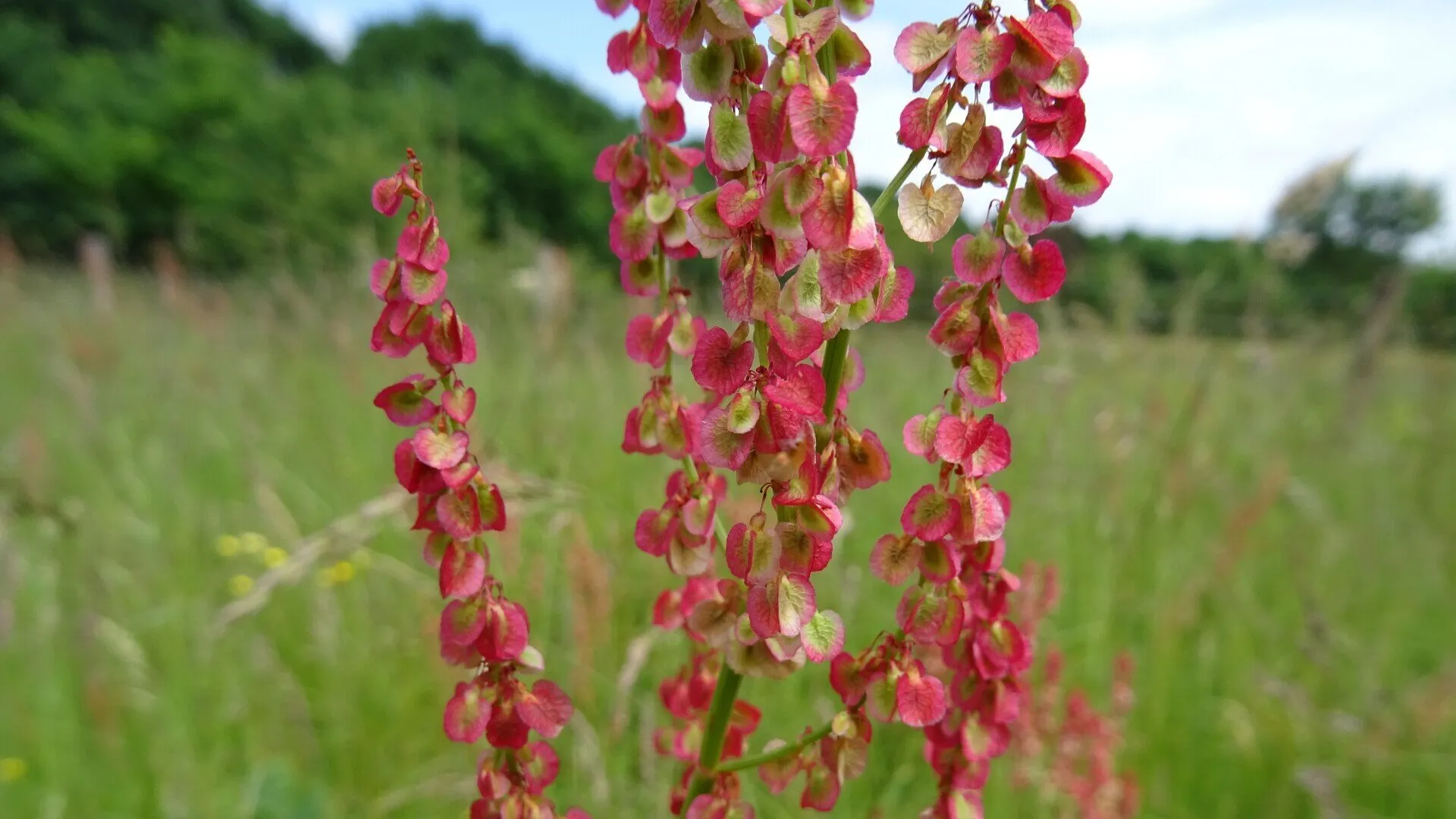WILDFLOWERS
DOCK FAMILY
Common Knotgrass
Polygonum aviculare flowers from June to November. Often seen prostrate on paths this plant was once common at the back of Hainault Lake before the path was improved around 2020 as part of the Hainault Forest restoration project. It is a short to medium, stiff-stemmed annual with leaves growing on flowering stems with leaf-joints surrounded by a silvery sheath. The white or pale-pink flowers grow in clusters of 1-6. Some reports say crushed leaves applied to a wound can stop a bleed, rubbing into nostrils even stops a nosebleed, however this website has not put this to the test. Also known as Prostrate Knotgrass.
Small-leave Knotgrass
Polygonum arenastrum
appears on well-trodden gravel paths. Most people probably don't give this sprawling annual a second look because it grows close to the ground and has tiny flowers. It has small regular shaped leaves and flowers from July to November.
Redshank
Persicaria maculosa is a short, occasionally tall, sprawling annual with reddish, well-branched stems. Its narrow leaves normally show a dark mark in the centre. The pink flowers are tightly grouped in short, stout spikes from June to October. This plant is sometimes seen on waste ground beside woodland paths. Before 2020 this plant was common at the edge of Foxburrow Barn.
Broad-leaved dock
Rumex obtusifolius is a perennial that grows up to one metre tall. It has large, wavy-edged, oblong leaves and is said to cure nettle stings when rubbed against irritated skin. Clusters of reddish-brown flowers appear on spikes from June to October. This plant is often found on disturbed ground.
Curled Dock
Rumex crispus can be found all year round growing up to one metre tall. Usually found on disturbed ground or near water, although it actually prefers dry soils. Nevertheless, it is very hardy and can survive several months submerged in floodwaters. Leaves of Curled Dock are slender with wavy edges and normally tapering to a point. The tall flower spikes are densely packed with flowers and seeds.
Common Sorrel
Rumex acetosa creates large red patches in the meadows when its flowers appear on tall spikes. Leaves are generally arrow-shaped and shiny, but when young are shorter and rounder. Basal leaves always has pointed ‘tails’ which is a key identifying characteristic of this plant. Small winged seeds are dispersed on the wind.
© hainaultforest.net. All rights reserved.


